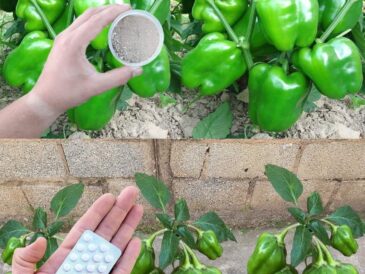Hostas, with their majestic leaves and captivating colors, are a mainstay in many shade gardens. But for new and seasoned growers alike, these shade-loving plants can hold hidden mysteries. Fear not, fellow plant enthusiasts! This guide unlocks five secrets to cultivating a flourishing hosta haven, ensuring your garden boasts a tapestry of lush, vibrant foliage.
1. Shade is Your Ally, Not Your Enemy: Hostas thrive in dappled or full shade. Direct sunlight can scorch their delicate leaves, leaving them burnt and crispy. So, when scouting for placement, prioritize areas protected from the midday sun. Think beneath towering trees, along north-facing walls, or bordering walkways that receive filtered light.
2. Embrace the Power of Mulch: Mulch your hostas with a 2-3 inch layer of organic matter like shredded bark, compost, or wood chips. This not only retains moisture in the soil, crucial for these thirsty plants, but also suppresses weeds that compete for nutrients. As an added bonus, mulch creates a finished look and adds a touch of rustic charm to your garden.
3. Watering Wisely: Friend or Foe? Hostas prefer consistently moist soil, but don’t drown them! Overwatering can lead to root rot, a silent killer. The key is to find the balance. Water deeply when the top inch of soil feels dry, and let the excess drain freely. During hot summer spells, you might need to water more frequently, especially for newly planted hostas.
4. Size Matters: Choose Wisely for Your Space: Hostas come in a stunning array of sizes, from petite miniatures to giants with leaves reaching several feet wide. Before planting, consider the mature size of the variety you choose. Don’t crowd your hostas; allow them enough space to reach their full potential without blocking sunlight from other shade-loving plants.
5. Division is Liberation: Sharing the Hosta Love: Hostas are known for their ability to spread and form sizable clumps over time. This is where division comes in. Every 3-5 years, consider dividing your mature hosta clumps. This not only rejuvenates the plants but also allows you to share the beauty with friends or create more hosta magic in your own garden.
Bonus Tip: Hostas are generally pest and disease resistant. However, keep an eye out for slugs and snails who find the tender leaves quite delectable. Handpicking these slimy visitors or using organic slug control methods can help protect your precious foliage.
With these secrets in your arsenal, you’re well on your way to cultivating a thriving hosta haven. Remember, gardening is a journey of learning and experimentation. So, embrace the shade, observe your plants, and enjoy the ever-evolving beauty your hostas bring to your garden.




